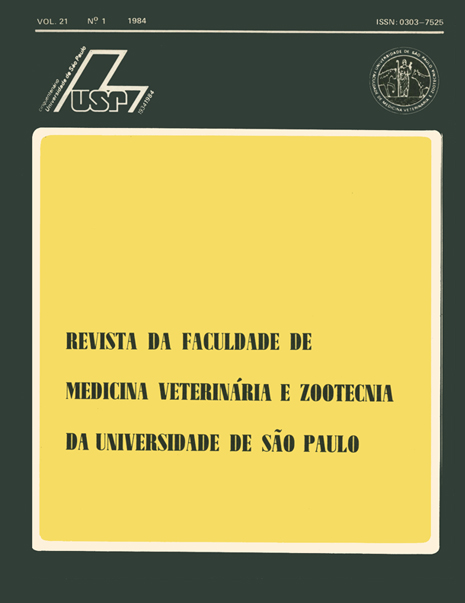Composição química de algumas plantas forrageiras oriundas do Estado do Mato Grosso do Sul
DOI:
https://doi.org/10.11606/issn.2318-3659.v21i1p77-83Palabras clave:
Forrageiras, Composição química, Mato Grosso do SulResumen
O trabalho relata um estudo da composição química de forragens, colhidas no Estado de Mato Grosso do Sul. Os capins Colo mão (Panicum maximum Jacq.) Jaraguá (Hyparrhenia rufa (Ness) Stapf), Pangola (Digitaria decumbens, Stent) e capim Angolinha (Eriochloa polystachya (H.BJC.) Hitch) foram colhidos durante seis meses. A área pesquisada possui cerca de 14.820 hectares e está localizada no município de Brasilândia. Durante a fase experimental os índices pluviométricos foram anotados mensalmente, e as determinações químicas foram executadas segundo métodos oficiais para matéria seca, proteína bruta, extrato etéreo, fibra bruta e cinzas. Os extrativos não nitrogenados foram obtidos por diferença. Houve diferenças estatisticamente significantes entre as médias de extrativos não nitrogenados, fibra bruta e cinzas. O capim Jaraguá apresentou a maior média de cinzas (11,0%) m enquanto os capins Pangola e Colonião a maior média de proteína bruta (7 2%)- Nenhum capim apresentou valores médios adequados de proteína para atender as exigências mínimas de bovinos em pastoreio.


